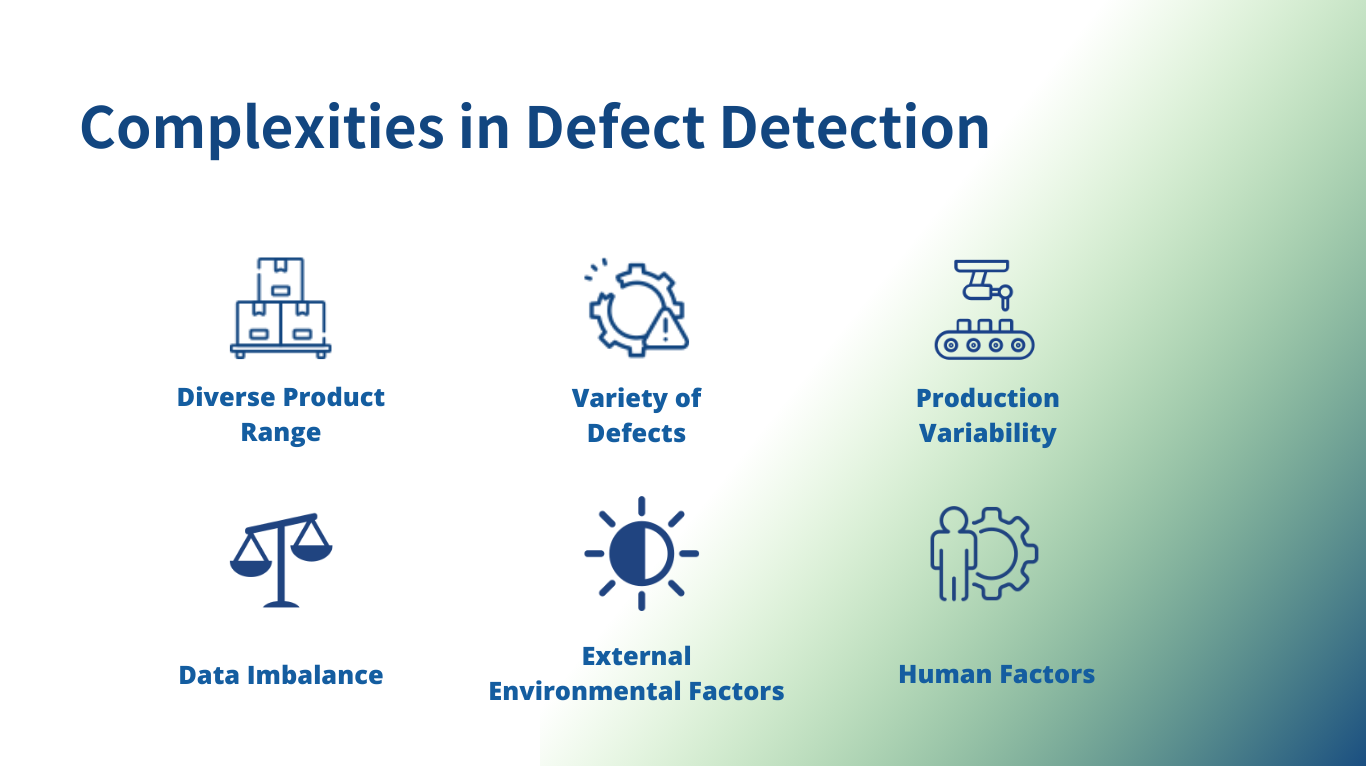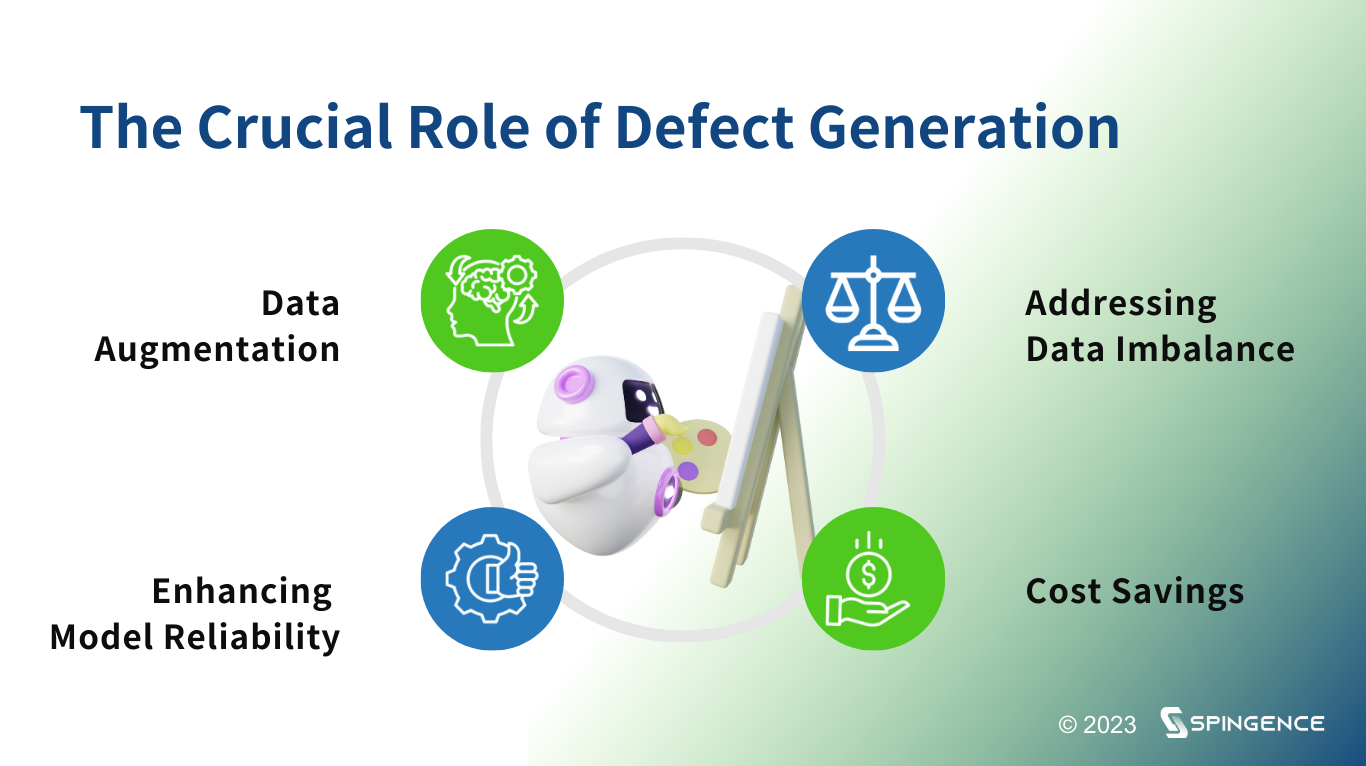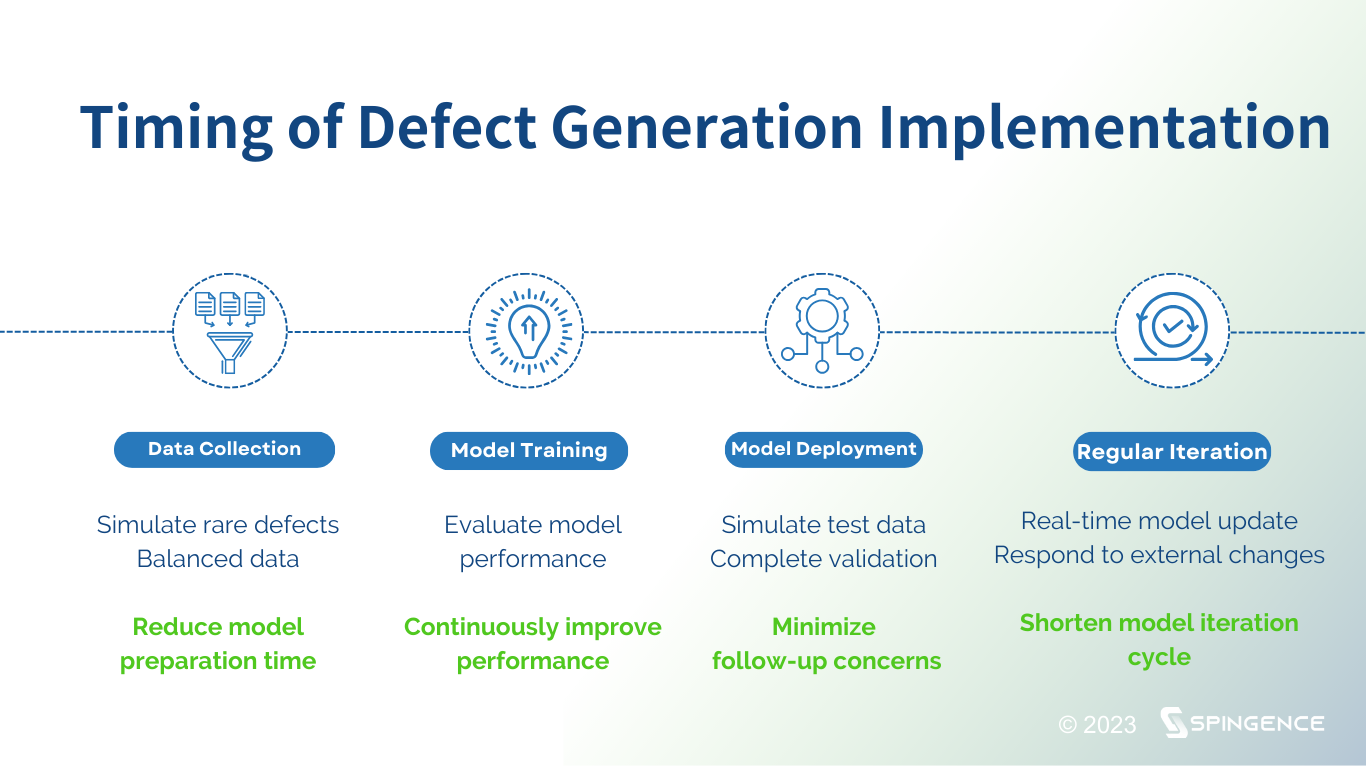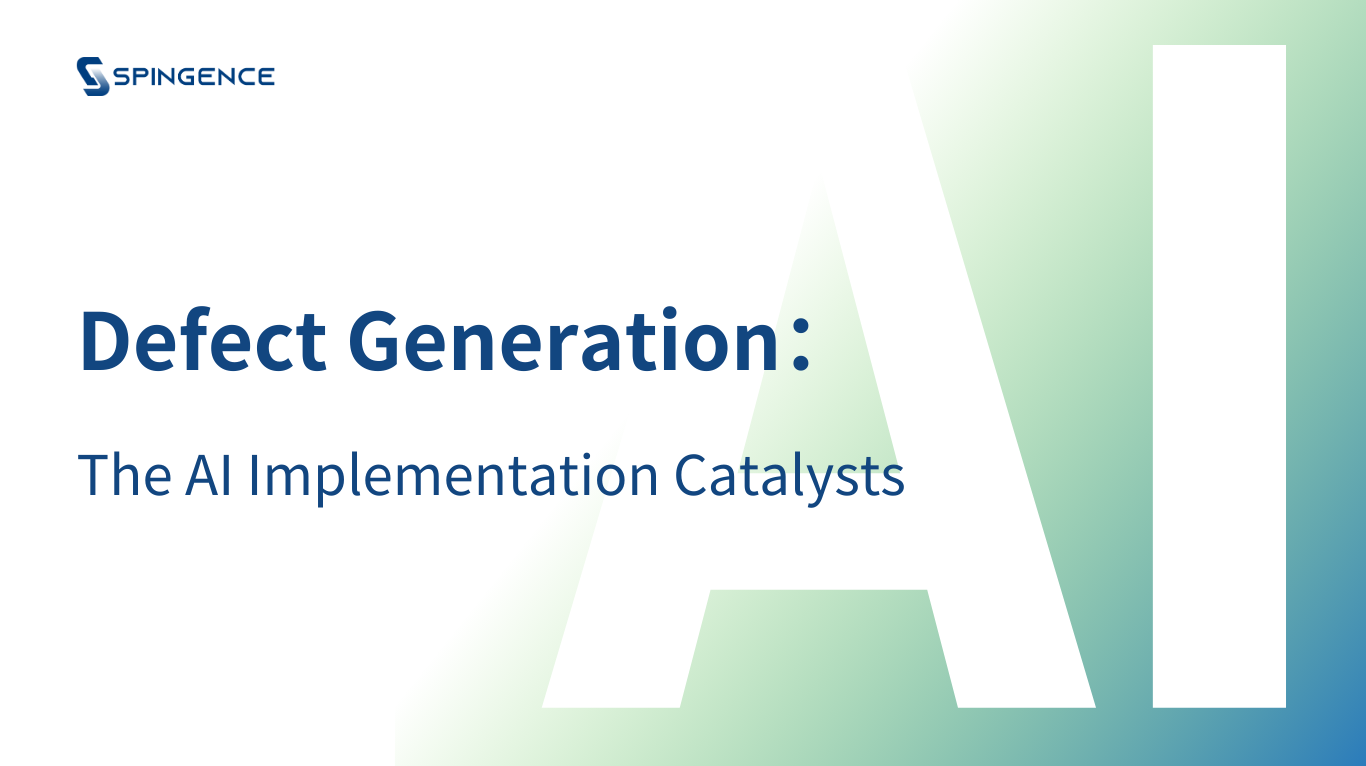We are committed to protecting your personal data and providing you with access to your personal data in accordance with the personal data protection laws in force in the European Union. We have updated and will periodically update our privacy policy to comply with this personal data protection law. Please refer to the latest version of our Privacy Statement.
This website uses cookies to provide a better browsing experience. To learn more about how cookies are used on this site please click here.
The Role of Defect Generation in AI Implementation
Challenges in Varied Manufacturing Environments
In the rapidly evolving landscape of manufacturing, the integration of Artificial Intelligence (AI) has become pivotal for enhancing efficiency and reducing costs. However, the complexities of diverse manufacturing environments present challenges for traditional defect detection methods. This article explores the role of Defect Generation in facilitating the implementation of AI, addressing the intricate challenges posed by the dynamic nature of modern manufacturing.
The modern manufacturing industry encounters multifaceted challenges, including market dynamics, technological developments, and the need for AI integration. These challenges contribute to the complexity of defect detection, as traditional methods struggle to adapt to the continuously changing defect scenarios. Key factors adding to this complexity include:
1. Product Diversity
Rapid technological advancements lead to diverse electronic products, each with unique appearances, materials, and production processes. This necessitates customized detection designs for different scenarios.
2. Defect Variety
Diverse defect types, such as visual flaws, functional issues, and process errors, require detection systems with the flexibility to adapt to various situations.
3. Production Variability
Continuous optimizations of manufacturing processes and parameters to align with market or factory needs may render previously trained models ineffective, requiring ongoing adjustments.
4. Data Imbalance
Imbalanced defect data distribution makes it challenging for detection systems to learn features adequately, affecting the accuracy of defect detection.
5. External Environmental Factors
Factors like light, temperature, and humidity may interfere with production lines, impacting the stability of defect detection equipment.
6. Human Factors
Operational errors and inadequate equipment maintenance introduce additional challenges, necessitating the simultaneous consideration of both machine and human factors in defect detection.

Amidst the complex challenges of diverse manufacturing environments, Defect Generation technology emerges as a vital accelerator for AI implementation, offering solutions that enhance flexibility, generalization, and efficiency in defect detection systems.
Defect Generation Technology
Defect Generation technology leverages machine learning methods, such as Generative Adversarial Networks (GANs), to simulate and generate various defect scenarios. By creating virtual defect data, this technology enhances training datasets, allowing AI models to learn features comprehensively and deepen their understanding of different defects.
The key roles of Defect Generation include:
(1) Data Augmentation for Short-Term Data Collection Surges:
Simulating various defect scenarios enables the rapid expansion of training datasets, addressing the challenge of limited actual defect data. This results in more accurate and reliable defect detection during practical applications.
(2) Effective Addressing of Data Imbalance:
Defect Generation efficiently balances imbalanced data distribution by generating more samples of rare defects, improving the model's ability to recognize various defects and enhancing overall system performance.
(3) Enhanced Model Reliability:
Defect Generation technology enables the creation of challenging and realistic test environments, ensuring AI models can adapt better to changes in the manufacturing environment. This contributes to improved model stability, ensuring efficient defect detection over prolonged periods and under diverse conditions.

Timing of Defect Generation Implementation
The value provided by Defect Generation technology extends throughout the AI implementation cycle, offering benefits at various stages:
(1). Short-Term Surge in Data Collection:
Rapid expansion of the training dataset shortens the time required to balance data, ensuring the model meets production line detection standards. This maximizes the reduction of preparation time before model deployment, offering a competitive advantage in mass production.
(2). Rapid Progress in Model Optimization:
Simulating generated defect scenarios allows quick evaluation of model performance under different conditions, facilitating rapid adjustments and optimizations.
(3). Precision Verification of Model Deployment:
Defect Generation technology rapidly generates various test scenarios, enabling more comprehensive system verification before model deployment.
(4). Periodic Updates and Iterative Responses:
Defect Generation enables quick model updates, ensuring the model can adapt rapidly to the changing manufacturing environment. This agility and flexibility allow manufacturers to effectively respond to market demands, emerging defects, and continuous production process optimization.

In conclusion, Defect Generation technology plays a pivotal role in the successful implementation of AI in diverse manufacturing environments. From addressing data challenges to enhancing model reliability, Defect Generation proves to be a key driving force, providing manufacturers with efficient solutions throughout the AI implementation cycle.
This technology positions itself as a valuable asset, empowering the manufacturing industry to navigate complex challenges and embrace a future marked by intelligent transformation.
Spingence offers defect generation services through SpinMind.
If you would like to learn more about our solutions, please feel free to contact us.
Let us collaborate to drive the intelligent transformation of your manufacturing business, embracing a more challenging future!




